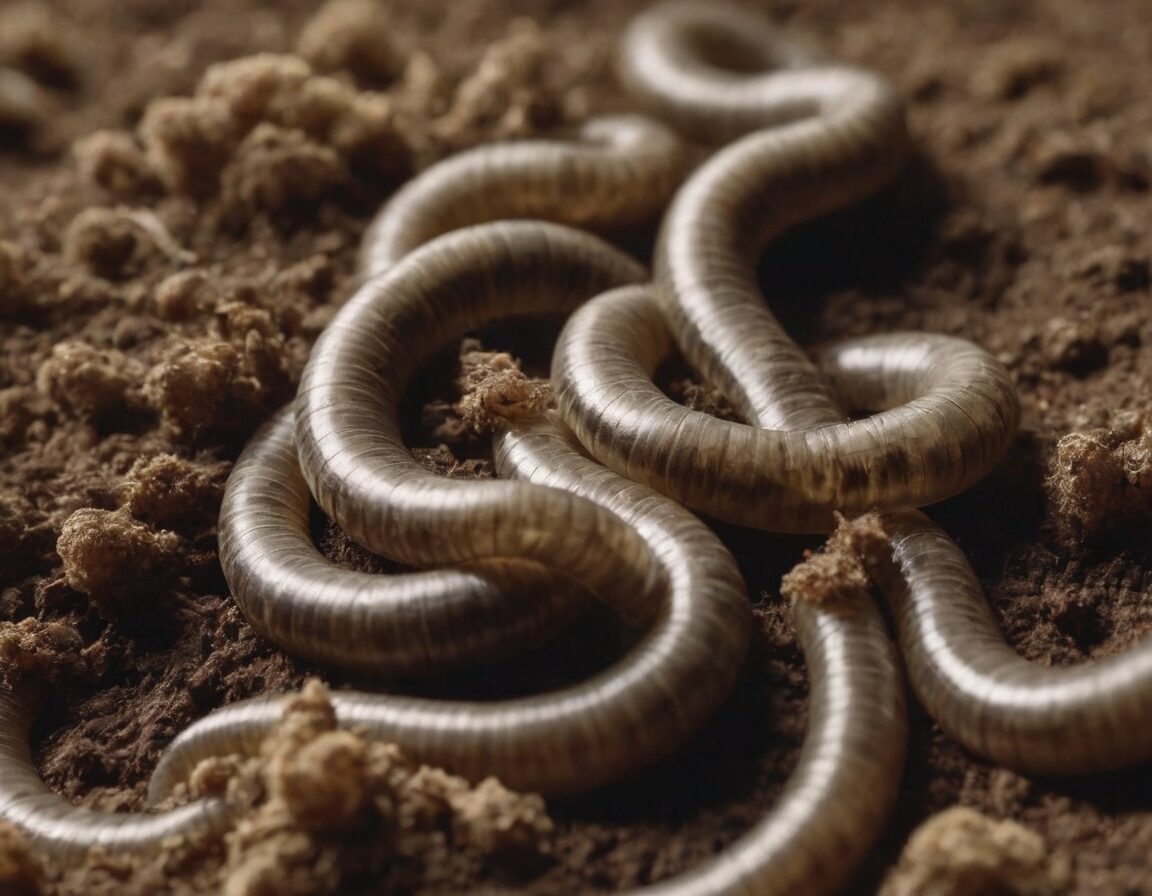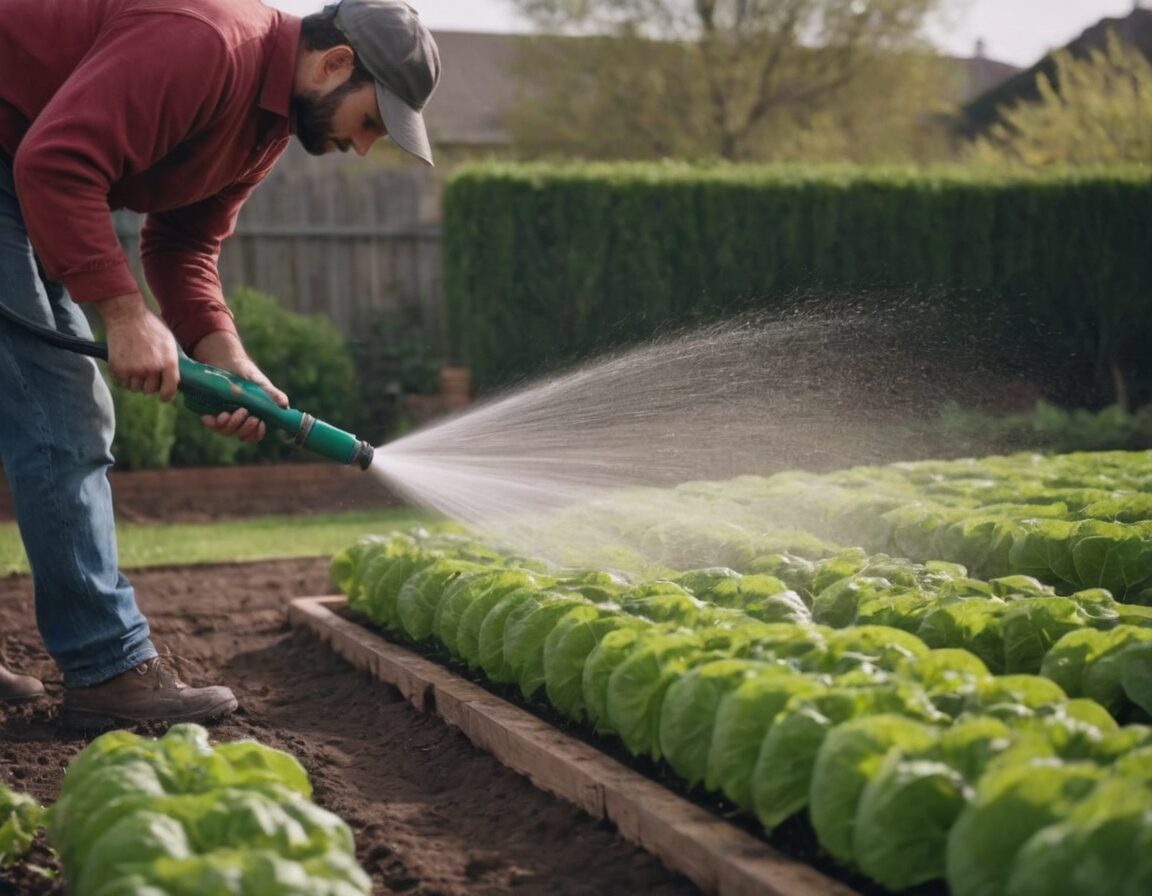Arizona’s warm and arid climate is perfect for growing a wide variety of vegetables, but it also provides an ideal environment for pests like grubs. These larvae can destroy your garden by feeding on plant roots, leading to poor growth and even plant death. Fortunately, beneficial nematodes for grubs in vegetable gardens in Arizona offer an eco-friendly, natural solution to combat these pests without relying on toxic chemicals.
Beneficial nematodes are microscopic worms that attack and eliminate soil-dwelling pests like grubs. They work by infecting their hosts with a lethal bacteria, which kills the grubs within days. Unlike chemical pesticides, nematodes are safe for your plants, pets, and beneficial insects. In this article, we’ll explore how to use beneficial nematodes effectively to keep your Arizona garden healthy and pest-free.
Key Takeaways
- Natural Pest Control: Beneficial nematodes are a non-toxic, natural way to control grubs in your vegetable garden.
- Safe and Eco-Friendly: Nematodes target only harmful pests, leaving beneficial insects, plants, and humans unharmed.
- Easy to Apply: These microscopic worms are easy to introduce to your garden, and their benefits last for a long time.
- Sustainable Solution: With proper care, nematodes can help maintain a healthy and balanced garden ecosystem over time.
Table of Contents
The Role of Grubs in Arizona Vegetable Gardens
Grubs are the larvae of beetles, and in Arizona, they are often the larvae of species such as Japanese beetles, June bugs, and chafers. They are notorious for feeding on plant roots, which disrupts nutrient and water absorption. As a result, your plants may start to wilt, show stunted growth, or even die off completely. In severe cases, entire sections of your garden may become decimated.
Grubs are typically active in the warmer months—late spring through summer—when they hatch and begin feeding on the roots of plants. Arizona’s soil, which tends to be more dry and sandy, provides a perfect habitat for these pests. Left unchecked, grub infestations can cause significant damage to both your garden’s appearance and overall health.
Table: Most Common Grubs Found in Arizona Gardens and Their Impact
| Grub Species | Common Host Plants | Impact on Garden |
| Japanese Beetle | Roses, beans, corn | Root damage, plant wilting |
| June Bug (May Beetle) | Tomatoes, lettuce, corn | Root consumption, plant weakening |
| Chafer Beetles | Various vegetables, flowers | Root damage, plant death |
What Are Beneficial Nematodes?
Beneficial nematodes are microscopic, parasitic worms that naturally occur in soil ecosystems. They belong to the family Steinernematidae and Heterorhabditidae, and are highly effective at controlling grubs and other soil-dwelling pests. These nematodes enter the pest’s body, releasing bacteria that infect and kill the pest. Within a few days, the pest is dead, and the nematodes continue to reproduce, allowing them to target additional pests.
The advantage of using beneficial nematodes in Arizona gardens is that they are highly adaptable to different soil conditions and climates. Since Arizona’s hot summers and dry soil can stress plants, beneficial nematodes thrive in these conditions, offering a long-lasting solution for controlling grubs without chemical intervention.

Why Choose Beneficial Nematodes for Grub Control in Arizona?
When it comes to pest control, beneficial nematodes offer a variety of advantages over traditional chemical pesticides. Here’s why they should be part of every Arizona gardener’s toolkit:
- Eco-Friendly: Unlike pesticides that can harm beneficial insects, birds, and animals, nematodes specifically target grubs and other pests. They do not affect other forms of garden life, keeping your garden’s ecosystem intact.
- Safe for Pets and Children: Beneficial nematodes are harmless to humans and pets, making them a safe option for families with kids and animals.
- Long-Lasting Results: When applied properly, nematodes can last for months, offering long-term protection for your garden. They continue to multiply in the soil, ensuring that pests remain under control.
- Effective and Cost-Efficient: Compared to chemical treatments, nematodes are relatively inexpensive and effective at reducing the pest population over time.
Table: Comparison Between Chemical Pesticides and Beneficial Nematodes
| Feature | Chemical Pesticides | Beneficial Nematodes |
| Toxicity to Humans/Pets | High | None |
| Harm to Beneficial Insects | Yes | No |
| Environmental Impact | Harmful | Minimal |
| Effectiveness on Grubs | Short-term, temporary | Long-lasting and sustainable |
| Cost | Higher | Lower |
Types of Beneficial Nematodes Available in Arizona
Several species of beneficial nematodes are effective in controlling grubs in Arizona’s gardens. The most commonly used types include:
- Steinernema carpocapsae: This species is ideal for cooler soil temperatures and works well for beetle larvae, especially Japanese beetles. It’s perfect for early spring applications before temperatures rise too high.
- Heterorhabditis bacteriophora: Best suited for Arizona’s hot climate, this species thrives in warm soils and targets a broader range of pests, including June bugs and chafer beetles.
- Steinernema feltiae: Effective in slightly cooler conditions, this nematode is great for fall applications when soil temperatures start to drop.
Choosing the right species of nematode is crucial for ensuring success in controlling grubs. Make sure to select the one that best matches your garden’s environmental conditions.
How to Apply Beneficial Nematodes to Your Arizona Garden
Applying beneficial nematodes is a straightforward process. Follow these simple steps for effective application:
- Prepare the Area: Before applying nematodes, ensure that your garden soil is moist. Nematodes need moisture to move through the soil and reach grubs.
- Mix the Nematodes: Follow the instructions on the nematode packaging to mix them with water. This creates a slurry that can be easily distributed across your garden.
- Apply Evenly: Use a garden sprayer or watering can to evenly apply the nematode solution across the affected areas of your garden. Ensure thorough coverage.
- Water After Application: After applying, water the area again to help the nematodes penetrate deeper into the soil.
The best time to apply nematodes is in the early morning or late afternoon when temperatures are cooler and there is less direct sunlight.

Best Practices for Effective Nematode Application
For optimal results, follow these best practices when applying beneficial nematodes:
- Soil Moisture: Ensure the soil is moist before and after applying nematodes. Nematodes are delicate creatures, and dry soil can reduce their effectiveness.
- Right Timing: Apply nematodes during the grub’s peak feeding period, which is typically in late spring and early summer. Avoid applying during extreme heat, as high temperatures can kill the nematodes.
- Proper Storage: Store nematodes in a cool, shaded area before application. Exposure to direct sunlight or excessive heat can reduce their viability.
- Reapply as Needed: Depending on the severity of your grub infestation, you may need to reapply nematodes every 3 to 6 months.
By following these tips, you can maximize the effectiveness of nematodes in controlling grubs in your garden.
Understanding the Lifecycle of Beneficial Nematodes
The lifecycle of beneficial nematodes is relatively simple. After being applied to the soil, nematodes seek out their grub hosts. Once they find a grub, they enter its body and release a bacteria that kills the pest. The nematodes then reproduce within the host and continue to spread through the soil.
Environmental conditions like soil temperature and moisture affect their lifespan. In Arizona’s hot climate, nematodes may need to be reapplied more frequently during summer months. However, during cooler months, they tend to be more resilient.
Common Mistakes to Avoid When Using Beneficial Nematodes
To get the best results from beneficial nematodes, avoid these common mistakes:
- Incorrect Timing: Applying nematodes during high heat can kill them. Aim to apply during cooler parts of the day, early morning or late evening.
- Not Ensuring Proper Soil Moisture: Nematodes need moist soil to move through the ground effectively. Water your garden before and after applying nematodes.
- Improper Storage: Storing nematodes in direct sunlight or extreme heat can reduce their effectiveness. Always store them in a cool, shaded area until use.
Monitoring the Effectiveness of Nematodes in Your Garden
After applying beneficial nematodes, it’s essential to monitor the effectiveness of the treatment. Here’s how you can tell if the nematodes are working:
- Healthier Plants: If your plants are showing signs of improvement, such as reduced wilting and increased growth, it’s a good indication that the nematodes are controlling the grub population.
- Decreased Grub Numbers: You can dig a small section of soil to check for the presence of grubs. If you notice fewer grubs over time, your nematodes are working effectively.
Long-Term Benefits of Using Beneficial Nematodes in Arizona Gardens
Using beneficial nematodes offers many long-term benefits for your garden:
- Sustained Pest Control: Nematodes continue to reproduce and target pests throughout the season, reducing the need for repeated treatments.
- Healthy Soil: By eliminating harmful pests, nematodes help maintain a balanced and thriving soil ecosystem.
- Sustainable Gardening: This method of pest control is eco-friendly and helps you create a more sustainable garden without relying on harmful chemicals.

Conclusion: Embracing Beneficial Nematodes for a Healthier Arizona Garden
Beneficial nematodes are an incredibly effective and natural solution for managing grubs in your Arizona garden. By applying them correctly, you can reduce the damage caused by these pests while maintaining a safe and eco-friendly environment. Whether you’re dealing with Japanese beetles, June bugs, or chafer beetles, nematodes offer a sustainable and powerful tool for any Arizona gardener’s pest control arsenal.
Frequently Asked Questions
What exactly are beneficial nematodes, and how do they work against grubs?
Beneficial nematodes are microscopic worms that enter the bodies of pests like grubs and release bacteria that kill them. They provide a natural, chemical-free solution for pest control.
Can I use beneficial nematodes on all types of plants in my garden?
Yes, nematodes are safe for use on vegetables, fruits, and ornamental plants. They only target pests like grubs and don’t harm your plants.
Are beneficial nematodes safe for pets and children?
Yes, nematodes are completely non-toxic to pets and children, making them a safe option for family gardens.
How do I know if the nematodes are working in my garden?
Signs that nematodes are working include healthier plants, fewer wilting leaves, and a decrease in grub population.
How often should I apply beneficial nematodes to my garden?
Typically, nematodes should be applied once during the grub’s peak feeding season, but you may need to reapply every 3 to 6 months based on the severity of the infestation.
Can beneficial nematodes be used for other pests besides grubs?
Yes, beneficial nematodes can target other pests like root weevils, flea beetles, and certain types of ants, depending on the species used.
Author Bio

Robert Martin is a passionate blogger and versatile content creator exploring the intersections of personal finance, technology, lifestyle, and culture. With a strong background in financial literacy and entrepreneurship, he helps readers make smarter money moves, build sustainable side hustles, and achieve financial independence.
Beyond finance, Robert shares his insights on home decor and gardening—offering practical ideas for creating beautiful, functional living spaces that inspire comfort and creativity. He also dives into the dynamic worlds of sports and celebrity news, blending entertainment with thoughtful commentary on trends that shape today’s pop culture.
From decoding the latest fintech innovations to spotlighting everyday success stories, Robert delivers content that’s informative, relatable, and actionable. His mission is to empower readers to live well-rounded, financially confident lives while staying inspired, informed, and ahead of the curve.




